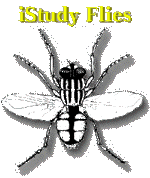|
iStudy Flies - Flies in General: Frequency and Distribution
FLIES IN GENERAL
Frequency and Distribution
It is probably of no great surprise to find the entomologist (insect scientist) asserting
that flies are the most widespread of all insects --  which
they are. Every continent and climate has flies. Swampy areas generally have a good
population of mosquitoes, deer flies, black flies, and biting midges. Flies are found
on every continent; including, Antarctica, where Antarctica's only native winged
insect, the midge Parochlus steinenii has restricted distribution, and the
wingless midge Belgica antarctica can be found in moist moss near Cerro Negro,
according to the Scientific Committee on Antarctica Research. [18] Of course, the fly must have some
kind of plant or organic matter on which to feed; so, when their food source is plentiful,
the flies will be plentiful. which
they are. Every continent and climate has flies. Swampy areas generally have a good
population of mosquitoes, deer flies, black flies, and biting midges. Flies are found
on every continent; including, Antarctica, where Antarctica's only native winged
insect, the midge Parochlus steinenii has restricted distribution, and the
wingless midge Belgica antarctica can be found in moist moss near Cerro Negro,
according to the Scientific Committee on Antarctica Research. [18] Of course, the fly must have some
kind of plant or organic matter on which to feed; so, when their food source is plentiful,
the flies will be plentiful.
Flies are known to remain active at temperatures as low as 14° F (-14° C),
i.e., the snow fly, and the larvae of the petroleum fly lives in pools of crude petroleum.
[19]
Though it is now believed by scientists to be impossible, entomologist C. H. T. Townsend
in 1926 estimated the Deer Bot fly (Cephanomvia pratti) to be able to attain
a speed of 818 miles per hour (1,316 kilometers per hour). Whatever the case, he
believed the Deer Bot fly to be fast! [20] Some flies are blood suckers, such as the sand fly (Phlebotominae).
Mothlike in appearance, sand flies can be found inhabiting organic matter in animal
burrows, termite hills, and tree holes. They are found mainly in the tropics, with
a few species in temperate regions. [21]
|

